|
|
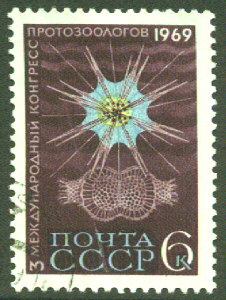 |
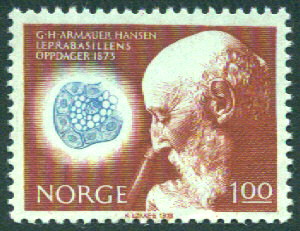 |
|
|
Budapest, 1982. A simple but striking design incorporating an SEM image of blood corpuscles. |
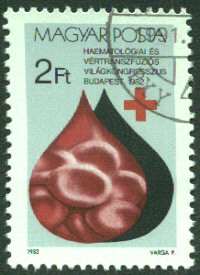 |
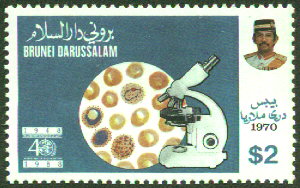 |
forty year anniversary 1988. An optical photomicrograph of blood. Do you recognise the microscope, possibly a Zeiss. |
|
|
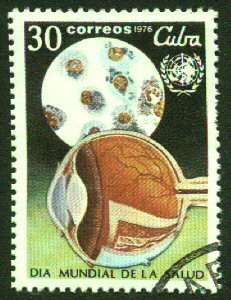 |
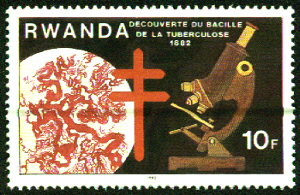 |
|
|
|
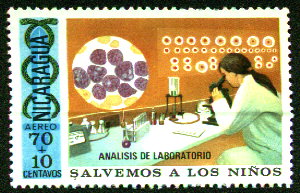 |
by Dave Walker
The previous Micscape Article Microscopy on Stamps showed some of the very attractive stamps that have been issued which illustrate microscopes. There have also been many attractive stamps issued which are illustrated with photomicrographs or illustrations of microscopic subjects.
In this short article, a few of these stamps from the author's very small collection are shown. Although lists of stamps depicting microscopes have been issued (see above article for refs.), I 'm not aware of a listing for those illustrating microscopic subjects (if you know of a listing let me know). Many stamps do illustrate both a microscope and a microscopic subject.
Some of the topics or events that have been celebrated by photomicrography or microscopic illustrations are scientific meetings, disease control or eradication, anniversaries of the deaths of famous microbiologists (or the anniversary of their discovery of a disease), anniversaries of the founding of societies, institutions. A recent well known set of UK stamps illustrating the 150th anniversary of the Royal Microscopical Society was shown in the previous article.
You don't have to be a philatelist (and my interest is a very casual one) to enjoy collecting stamps on a thematic topic. Collecting stamps related to microscopy can promote an interest in the lives of some of the famous scientists celebrated on many of these stamps or the diseases they discovered.
Here are a selection of stamps that illustrate some of the themes listed above.
|
|
 |
 |
|
|
Budapest, 1982. A simple but striking design incorporating an SEM image of blood corpuscles. |
 |
 |
forty year anniversary 1988. An optical photomicrograph of blood. Do you recognise the microscope, possibly a Zeiss. |
|
|
 |
 |
|
|
|
 |
Acknowledgements. Thanks to Jan Parmentier, Holland for suggesting a possible identification for the marine radiolarian. Also to Bill Heathwood, Eire, who I have swapped some stimulating correspondence with on microscopy on stamps and who generously supplied some stamps to boost my collection.
Related web sites:
Microscopy
as illustrated on postage stamps - an excellent online stamp gallery
of various microscopy themes and also of famous scientists, with notes.
Link seems to be inactive Feb. 2006.
Please report any Web problems
or offer general comments to the Micscape
Editor,
via the contact on current
Micscape Index.
Micscape is the on-line monthly
magazine of the Microscopy UK web
site at Microscopy-UK